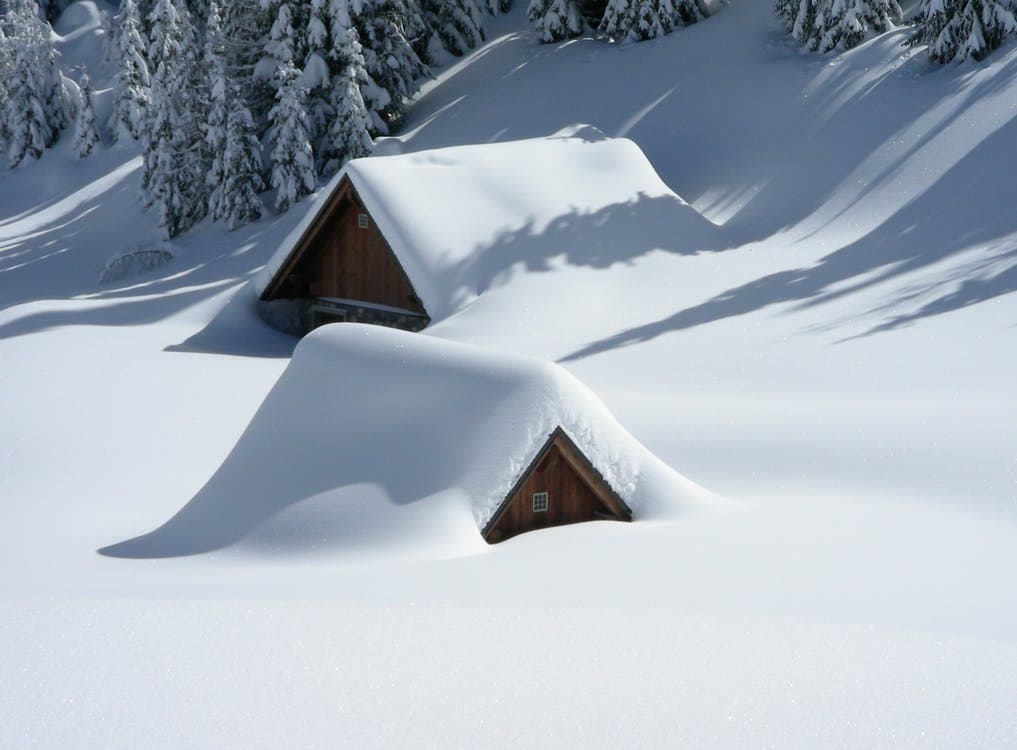Roofs are built to withstand tough weather conditions, including high winds, heavy rains, and snow. However, during particular wet and cold winters, when snow does not melt but simply accumulates upon itself, you may need to keep a closer eye on the roof and consider snow removal if it looks like it will become an issue. Here’s what you need to know:
In general, roofs can withstand up to about 20 pounds of snow. How much does snow weigh?
- It depends. One foot deep of fresh snow weighs approximately 5 pounds per square foot on the roof. Thus, your roof can withstand about 4 feet of fresh snow comfortably. Old snow, or snow that has had time to melt and refreeze and pack, weighs more. 3-5 inches of old snow weighs the same as a foot of new snow, which means your roof can only withstand about 2 feet deep of old snow. Ice is much heavier. One inch of ice is equivalent to a foot of fresh snow, so your roof can handle only about 4 inches of ice before trouble ensues.
Rain on snow spells danger.
- When rain falls on accumulated snow, this can double and even triple the weight of snow, making it much more likely to cause damage. Pay close attention to your roof if this occurs. Look for signs of overstress such as sagging ceilings, popping or cracking noises, doors and windows that no longer close, or cracks in walls. If you have any of these warning signs, contact a roofing contractor or snow removal contractor immediately.
Steep roofs accumulate less snow, flatter roofs accumulate more.
- If you have a porch or garage with a flat roof, pay close attention to this and take extra care to prevent snow and ice build up. These are at the greatest danger for damage.
Look for unbalanced snow.
- With high winds and drifting snow, snow may accumulate at different depths in different areas of the roof, resulting in unbalanced – or differential – snow load. This can pose a greater risk to your roof than evenly distributed snow. Where snow drifts have accumulated, your roof in that area is subjected to a greater snow load and thus, more likely to suffer damage.
Do not run space heaters in your attic.
- You may be tempted to ‘melt’ the snow off your roof by running a bunch of space heaters in your attic. This is a bad idea. Even if you were able to warm the roof sufficiently enough to melt the snow, the running snow would simply run until it could progress no further, pool up, and re-freeze, creating ice-dams, soaked sheathing, and potential leaks.
If your roof was built to code – which means it was built to withstand the snow that typically falls in your area – you should not have to worry about whether or not your roof can withstand snow falls. Keep these tips in mind, and be sure to hire a roofing contractor that adheres to local codes and regulations when installing a new roof so that you can be rest assured when the snow falls.

